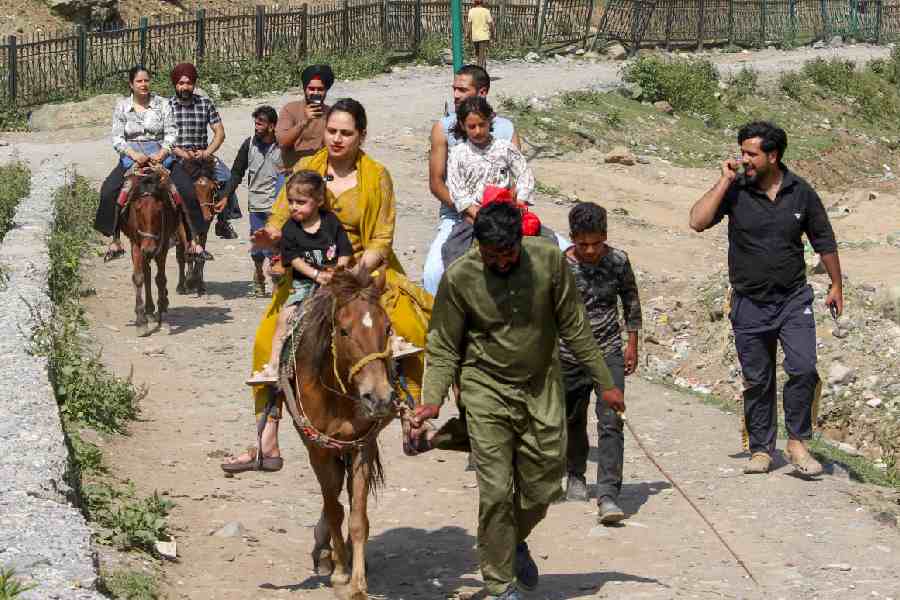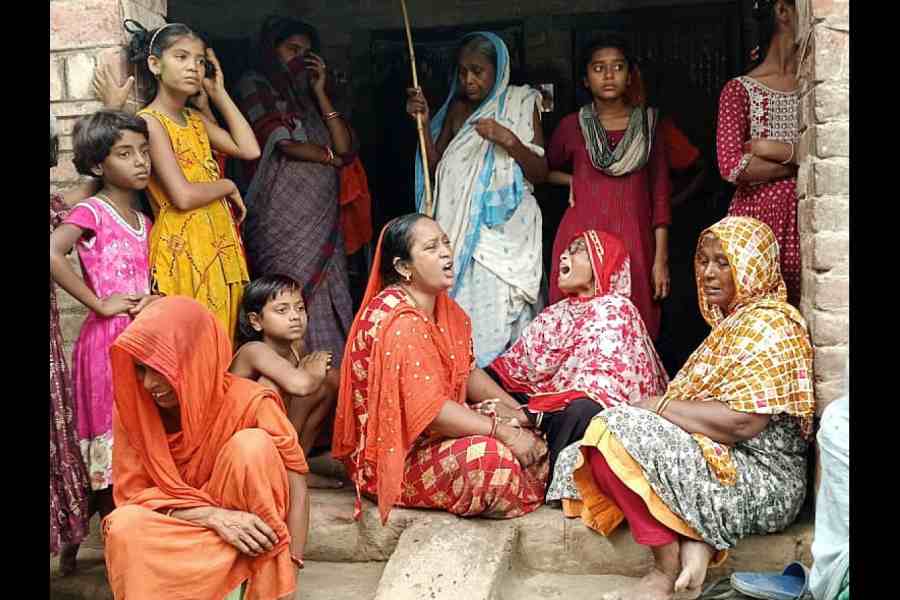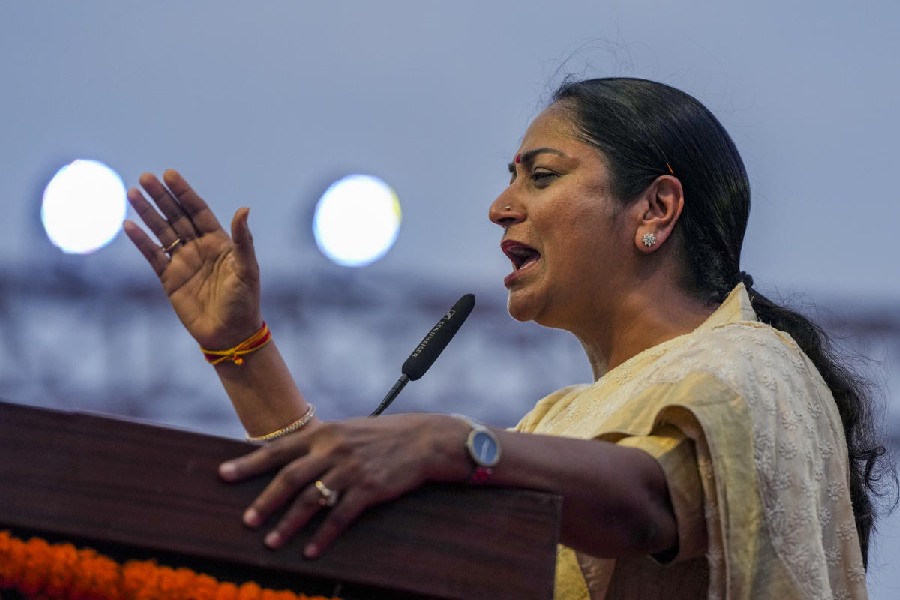
Is the theatre-watching public in Salt Lake a species on the decline? The 20th edition of Lokkrishti Theatre Festival recently held in Labanhrad Mancha certainly gave such an impression.
“Salt Lake is a hub of culture. We did not dream that we would have to inaugurate our festival in such a situation,” lamented Kanti Mukherjee, the president of the AA Block group. He was addressing a hall with just about a quarter of the seats taken.

Golden past
The turn of the century was possibly the best period for group theatre. “When the BD Block hall was being built, I was invited by Prasun Kanjilal, who ran the group Saptarashmi, to direct Marich Sangbad. The stage was not there, neither was the toilet ready. We erected a makeshift platform and put up the play,” recalls Phalguni Chatterjee, director of Lokkrishti.
Lokkrishti, which was formed soon after, was the first to start a theatre festival in the township in 1999. “Many residents thanked us then, saying the Academy of Fine Arts was too far from them to visit,” Mukherjee recalled.
“So many groups were active in those days that we had to book halls in advance,” Chatterjee added.
Ajitesh Natya Goshthi, helmed by Ajitesh Bandyopadhyay’s brother Sunit, organised a theatre festival from 2001 to 2003. “When we staged Teen Poyshar Pala or Manjari Amer Manjari, not only would the chairs at Bidyut Bhavan be taken but there would also be people sitting on the floor. Stalwarts like Meghnad Bhattacharya, Bibhas Chakraborty, Manoj Mitra, Ramaprasad Banik, Kaushik Sen — all colleagues or students of Ajiteshda — had performed in our festival,” recalls Sumit Sarkar, a member of the group who stays in Labony Estate. But after Sunit Bandyopadhyay, also from Labony, died in course of the third festival, it was discontinued.
Another group called Dishari, he recalls, organised a festival in FD Block for a year or two.
Theatre activists also recall a couple of drama contests being held in the township. One such would be organised by Saptarashmi, recalls Sukumar Chakraborty, a resident of Labony Abasan and secretary of the theatre group Drammar who took part in the contest for three years around 2005. “There would be two plays put up on per day. Judges came from outside. Results would be announced the next weekend.”
Many other groups were active then, like Bidhannagar Theatre Academy and Simantik. Most of them have disbanded now.
But attendance had not dipped. “Even three years ago when we last held our festival at EZCC’s Purbashree auditorium, less than a 100 tickets were left unsold in a hall of 920,” Chaterjee said.

The reason why
“People are not interested in what does not yield instant pleasure these days,” said councillor Anindya Chatterjee at the inauguration.
Chakraborty of Drammar feels theatre has failed to bring in new audiences. “The generation which enjoyed theatre is growing infirm and passing away. The younger lot are more interested in IPL matches or TV serials. If they go out they would rather hang out at City Centre,” he says.
Others refuse to be totally pessimistic. Hirak Suvra Chatterjee of Salt Lake Theatre, which organisesthe only other annual theatre festival here, feels there is still enough enthusiasm among residents. “But they come only to see stars. If you bring productions featuring big names like Saumitra Chatterjee or Rudraprasad Sengupta, people would come,” he says.
There might be some truth in the observation. The evening when Debshankar Halder took stage with Equations, attendance rose to half full, registering the festival’s highest footfall.
Bijan Ghosh of the theatre group Britya feels it was the wrong season to host a festival. “People are on the lookout for outdoor entertainment in winter.”
Lokkrishti also points at government apathy towards group theatre in Salt Lake. “For shows in halls in the Calcutta Municipal Corporation (CMC) area, we pay just Re 1 as tax. Here we have to pay Rs 10,000 to Poura Bhavan if we book EZCC. Neither is there a subsidy on rent for Natya Academy members like at the halls under CMC. Academy of Fine Arts, for instance, charges us half their commercial rate. We had to move out of EZCC as they would not reduce their Rs 30,000 rent. Even here at BD hall, we have to fork out the full Rs 8,000 rent. When we started the festival, not only were we allowed to put up publicity banners for free, but erstwhile chairperson Dilip Gupta also insisted on buying a season ticket himself. All we had to do was inform Poura Bhavan about the number of banners we were putting up and their locations. We cannot afford to pay Rs 6000 per banner. If we could do some publicity, perhaps some more people would have come,” says the Lokkrishti director.
Samar Mitra of Niva Arts,which coproduced the festival, appealed to the Corporation to let the hall stage plays every Sunday for six months, charging just for power consumption. “It will take time to bring the audience back but with persistence it will happen.”
“We are spending money from our own pocket to make this festival happen but if such is the all-round apathy then we will have to think whether to continue. If theatre, a tool for building awareness, is considered useless then it is a sad and dangerous time,” Chatterjee signed off.










